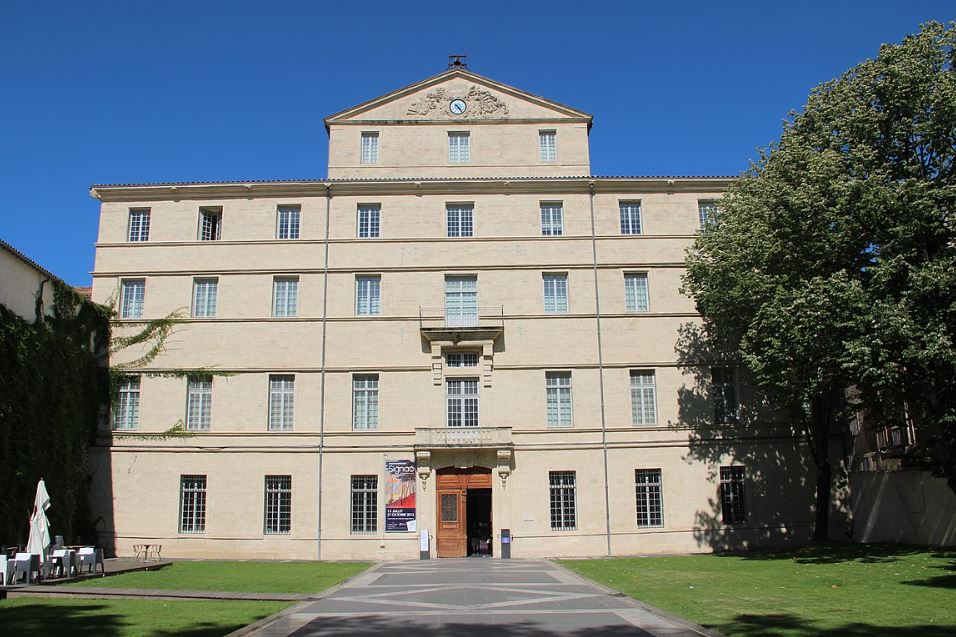Even though the career of this French artist started in the final period of the Romantic era, he never really adopted the emotional style of his colleagues.
Gustave Courbet (1819-1877) was a Realism artist whose main aim was to depict subject matter as accurately as possible.
He wasn’t interested in painting historical subjects either, something that caused friction with the academic establishment in France. This often resulted in his paintings being ridiculed.
In this article, you’ll discover some of the most interesting facts about La Rencontre or “The Meeting,” one of the Courbet’s most famous paintings.
1. It was painted shortly after he achieved his artistic breakthrough
Gustave Courbet grew up during the Romantic era but was never really interested in the Romantic approach toward art.
He did, however, paint several self-portraits during the 1840s which resemble Romantic paintings, but quickly adopted a style that solely focused on painting subject matter as accurately as possible.
He traveled to Belgium and the Netherlands between 1846 and 1847 and was especially inspired by the paintings of Dutch artists such as Rembrandt and Frans Hals.
He got his first major breakthrough in 1849 with paintings titled “The Stone Breakers” and “After Dinner at Ornans.” The latter was a great success as the Paris Salon and brought him his first recognition.
He completed La Rencontre or “The Meeting” in 1854, a time when he was already a respected artist, especially among the younger generation of art critics.
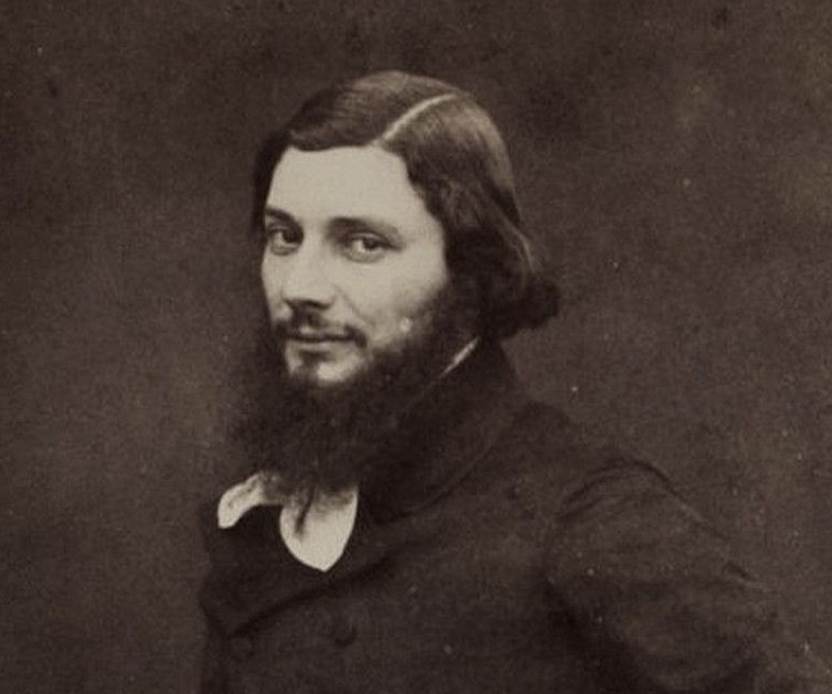
2. It depicts a meeting between the artist and his patron
The painting depicts a meeting in the countryside between Gustave Courbet (right) ad his patron Alfred Bruyas (1821-1877) (center).
The other figures in the painting are Bruyas’ servant named Callas, who appears to be humbled by the meeting, and his dog.
The composition is fairly simple as we can see the main figures in the foreground and a relatively flat landscape in the background.

3. The scene takes place while Courbet is walking toward Montpellier
The scene reportedly takes place on the road between Saint-Jean de Védas and Mireval, two places just south of the major French city of Montpellier.
Mireval is a small village along the Mediterranean coast in the utmost southern part of France. Saint-Jean-de-Védas has become a suburb of Montpellier in the southwestern part of the city.
The reason why Courbet painted the meeting in this location is that Alfred Bruyas was the son of a wealthy banker from Montpellier. He used his wealth to build an impressive collection of fine art.
He spent time in Paris between 1849 and 1854 and collected paintings from various artists, most notably Courbet. He played a major role in the artist’s career, especially during these initial years.
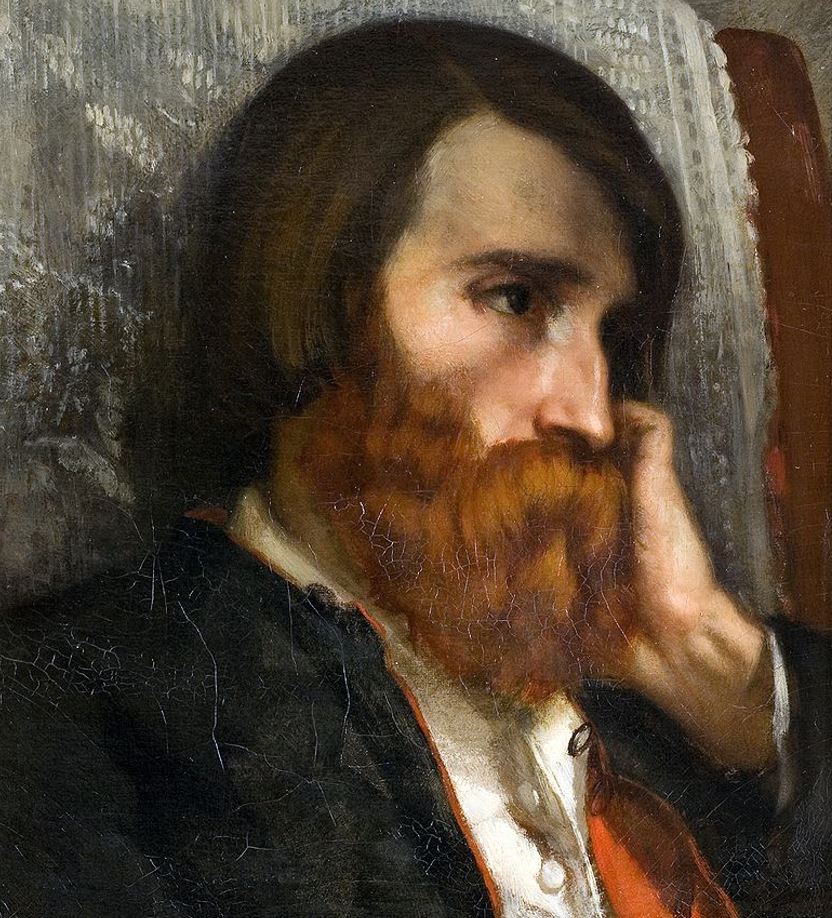
4. The idea behind the painting is based on a popular myth
The painting wasn’t merely a meeting between the upcoming French painter and his rich patron, but it has a deeper meaning as well.
Courbet’s idea was to depict the myth of the Wandering Jew. It was inspired by a print published in 1831 by Pierre Leloup du Mans titled “The bourgeois of the city talking to the wandering Jew.”
The myth of the Wandering Jew emerged in Europe in the 13th century. It refers to an immortal man who was doomed to walk the Earth forever after mocking Jesus Christ on the way to his Crucifixion.

5. There’s something remarkable about the way Courbet portrayed himself
Courbet certainly wasn’t the first artist who identified himself with the Wandering Jew when he completed La Rencontre in 1854.
The Jew received the eternal punishment of forever walking the face of the Earth for mocking Jesus Christ and was in a constant state of agony.
This makes it all the more remarkable that Gustave Courbet portrayed himself as a healthy young man who appears to be very fit and not tired at all.
He also looks rather arrogant as he meets the man who paid him handsomely to produce paintings. Alfred Bruyas looks rather frail compared to the buff appearance of Courbet.
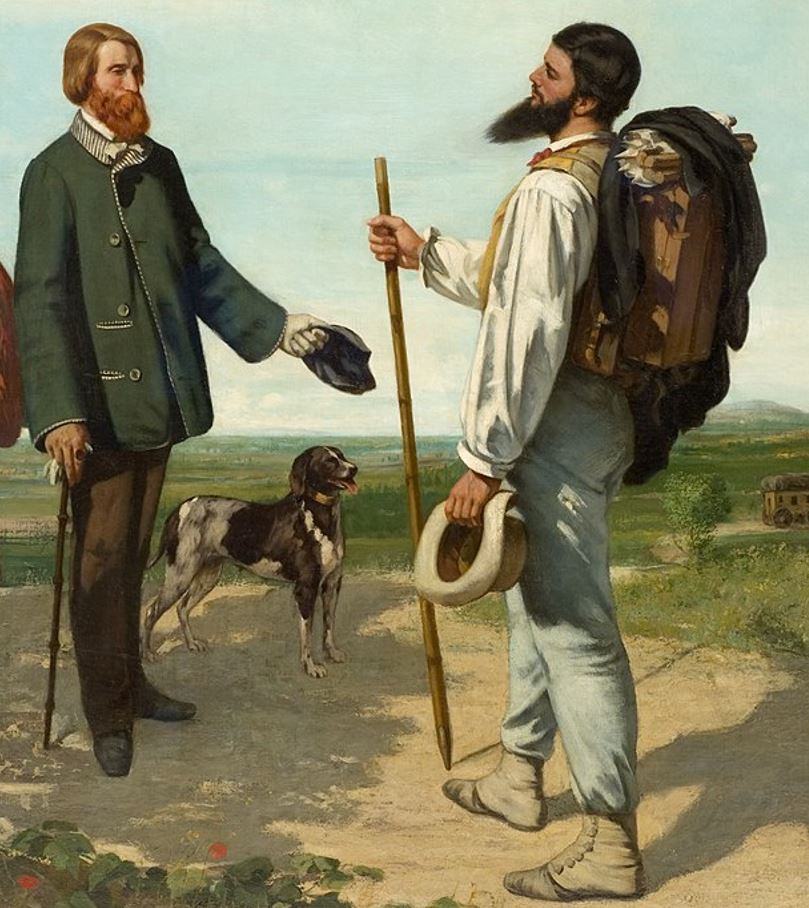
6. The painting was ridiculed by art critics when it was displayed in 1855
La Rencontre was exhibited at the 1855 Exhibition Universelle, a major event in Paris for which the Palais de l’Industrie was specially built.
This building in Paris was, however, demolished to make way for the Grand Palais which served as the main venue of the World Fair of 1900.
The painting wasn’t met with a lot of enthusiasm, except for the young generation of art critics who already embraced the style of Courbet in the 1850s.
During this event, the painting was mockingly referred to as “Bonjour, Monsieur Courbet.”
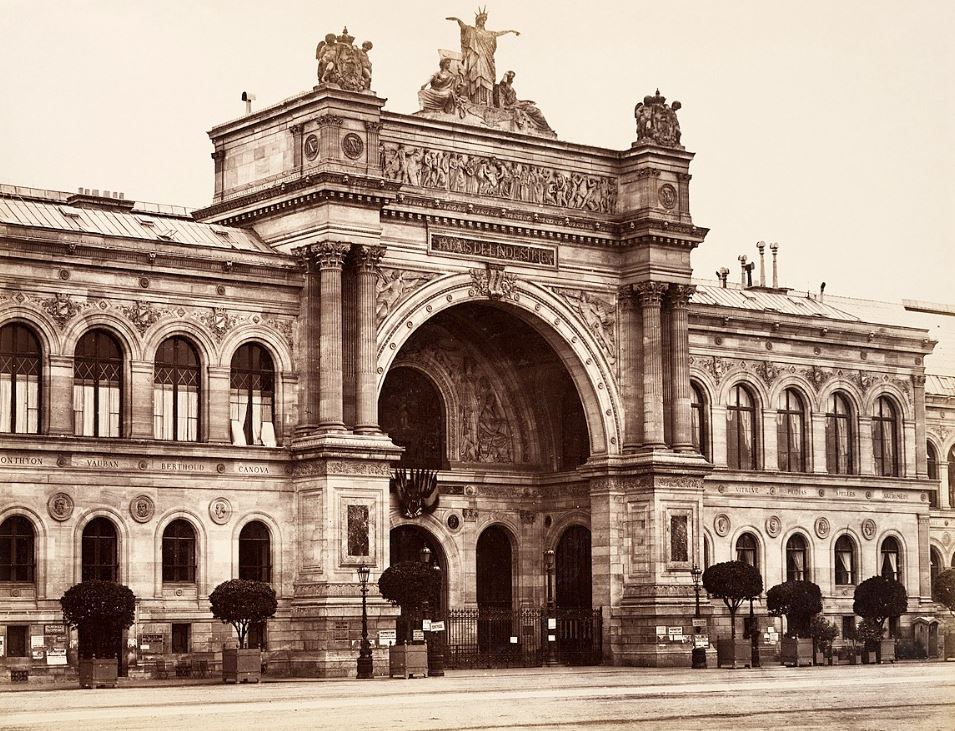
7. How big is La Recontre by Gustave Courbet?
La Rencontre or “The Meeting” by Gustave Courbet is a medium-sized oil on canvas painting that has dimensions of 129 × 149 centimeters (51 × 59 inches).
8. Where is Courbet’s famous painting located today?
Alfred Bruyas commissioned this painting but he never publicly displayed it until he donated his collection to a popular museum in his home city of Montpellier.
In 1868, he donated his entire collection to the Musée Fabre, including La Rencontre.
This is a museum that was established in 1825 and which is located near the main square in the city called the Place de la Comédie.
This museum went a major renovation in the early 21st century and remains one of the most popular attractions in Montpellier.
